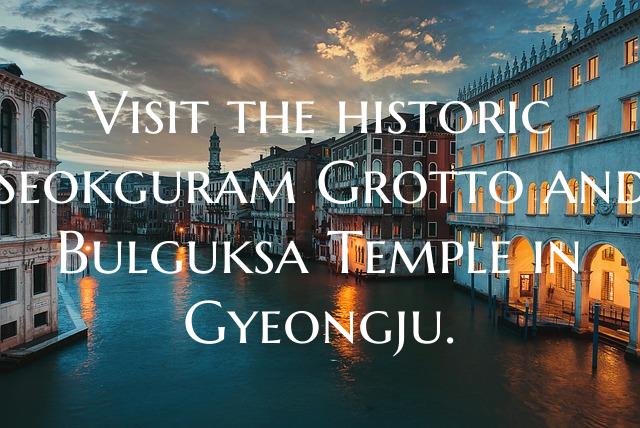
Nestled in the tranquil hills of Gyeongju, South Korea, lie two marvels of ancient Buddhist architecture and artistry - the Seokguram Grotto and Bulguksa Temple. These UNESCO World Heritage sites offer visitors a glimpse into Korea's rich cultural and religious history, attracting pilgrims, history buffs, and curious travelers alike.
The Seokguram Grotto, a serene stone sanctuary dating back to the 8th century, is a masterpiece of Korean Buddhist art. Carved into a granite cliff face, the grotto houses a sublime statue of Buddha and other intricate sculptures that exemplify the skill and devotion of the artisans of the Unified Silla period. As visitors make their way through the dimly lit passageway leading to the central chamber, a sense of peace and reverence envelops them, creating a truly spiritual experience.
Just a short distance away, the Bulguksa Temple stands as a testament to the golden age of Silla architecture. Originally built in the 8th century and later restored to its former glory, this sprawling complex features elegant pagodas, ornate pavilions, and serene courtyards that invite contemplation and reflection. Strolling along the tree-lined paths, visitors can admire the intricate carvings, vibrant colors, and harmonious layout that reflect the ancient principles of Korean temple design.
Together, the Seokguram Grotto and Bulguksa Temple form a harmonious ensemble that showcases the religious fervor, artistic achievements, and architectural ingenuity of Korea's past. Whether you are drawn to the spiritual aura of the grotto or the timeless beauty of the temple, a visit to these historic sites promises a journey back in time to a bygone era of splendor and devotion. Experience the magic of Seokguram and Bulguksa, and immerse yourself in the captivating heritage of Gyeongju.